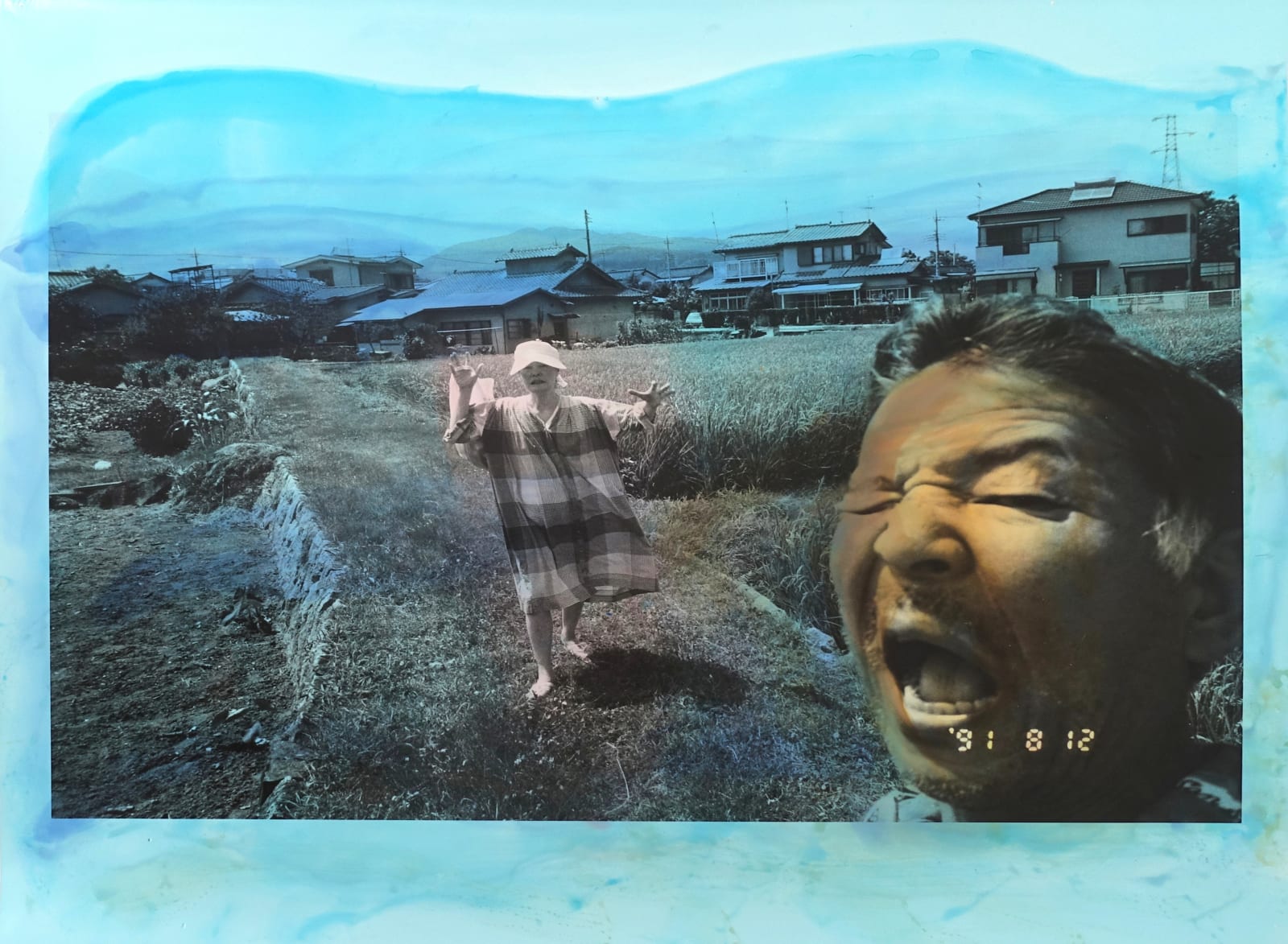-

Masahisa Fukase
Untitled, from Private Scenes, 1991Unique vintage hand-coloured silver gelatin printPaper size: 35.4 x 42.9 cmArtist estate wet stamp versoProvenance
From the Masahisa Fukase ArchivesLiterature
In this series, Fukase Masahisa photographed different places by turning the camera on himself, in a manner similar to what are now called selfies. The first exhibition of these images, which were shot during a trip in 1989 that took him to Paris, London, Brussels, Antwerp, Pompeii, and the Taj Mahal in India, was held at the Ginza Nikon Salon in November 1990; it was called Private Scenes. Fukase published a number of the images in the December 1990 issue of Nippon Camera under the title "Private Scenes Letters from Journeys."
(...) As suggested by the story's subtitle "Letters from Journeys," the photographs were taken during his journey abroad. Rather surprisingly, Fukase equipped his Nikon F3 with a 35mm lens. This no doubt partially explains why these self-portraits are taken at such close range that at times only his eye is visible, and why his face is blurred. Be that as it may, these images show an aging man on his own; they are not really what one calls souvenir photos. Indeed, they are rather mournful. Fukase, however, seemed particularly fond of this method of taking images.
He then changed settings and continued the series in Tokyo. The backdrops to the images were now more familiar. He also changed his Nikon F3 for a compact camera, a Konica Big Mini, and used the automatic date-stamp function. He spent a whole year photographing himself, from December 1990 to December 1991, and displayed the results in a second, bigger exhibition entitled Private Scenes '92. Visitors were met by the unsettling sight of over 450 overlapping prints arranged on the gallery's four black walls. None were framed, but rather hastily stuck up with drawing pins. The exhibition was divided into four parts: "Private Scenes," "Hibi" (Cracks), "Berobero" (Tongues), and "Bukubuku" (Bubbles).
(...) In an interview with the photographer Ishiuchi Miyako in 1991, Fukase referred back to this relationship that was central to Private Scenes. "There is no difference between the me who does the looking and the person who is being looked at. When I'm behind the viewfinder, I'm also always being looked at. This is the theme I'm working on at the moment [...] About the fact that the subject who looks is also the object looked at. I started to ask myself what I would look like if the looked-at me also became part of the photograph. At present, I'm interested in studying this not by taking the photograph from afar with a delayed shutter release, but close up."
Fukase realized that photographs of his surroundings also spoke of him, as the object looked at by the subject of his photograph. His reason for throwing himself into this series was to express this "relationship of viewer and viewed" in a concrete, direct fashion. And he found it surprisingly fascinating. "For the past four years, I have included myself in all my photographs, in an almost pathological manner, to the point of feeling as if I have eyes in the back of my head. I am obviously the subject, but the way in which I distance myself from the background is also interesting, so much so that I sometimes feel that the photos would be better without my face in them. It's true, I know, but I am unable to stop myself putting me in the photograph."
- Excerpt from Tomo Kosuga's essay in book MASAHISA FUKASE, 2018
